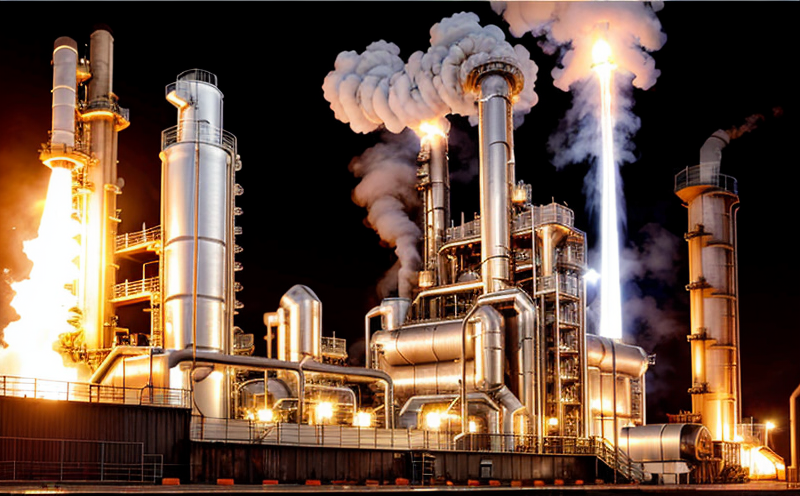ISO 4935 Determination of Carbon Content in Steels
The ISO 4935 standard is a critical component within the field of metallurgy and material testing, specifically targeting the determination of carbon content in steels. This service ensures precision and accuracy in measuring carbon content, which is essential for ensuring product quality and compliance with international standards.
Carbon content plays a pivotal role in defining the mechanical properties, such as hardness, strength, and ductility, of steel products. Accurate measurement allows manufacturers to tailor their processes to achieve the desired material characteristics. This service employs advanced spectroscopic techniques that are capable of providing reliable results even under varying conditions.
ISO 4935 specifies the use of an inductively coupled plasma optical emission spectrometry (ICP-OES) method for carbon determination. The procedure involves sample preparation, which typically includes dissolving the steel specimen in a suitable acid mixture. The resulting solution is then analyzed using ICP-OES to determine the concentration of carbon.
The precision and accuracy of this service are underpinned by strict adherence to ISO 4935 standards. The method allows for repeatability within ±0.01% relative standard deviation (RSD) at a carbon content level of approximately 0.2%, which is critical for ensuring consistent product quality.
Compliance with this standard ensures that the results are internationally recognized and accepted, facilitating trade across borders without the need for additional testing. This is particularly important in industries where global supply chains are prevalent. The service also supports ongoing research and development efforts by providing reliable baseline data against which new formulations can be evaluated.
For quality managers and compliance officers, this service offers a robust framework for ensuring that products meet specified carbon content requirements. R&D engineers benefit from the ability to refine processes based on accurate measurements, while procurement teams can verify supplier compliance with agreed-upon specifications.
Benefits
- Ensures precise and accurate measurement of carbon content in steels.
- Aids in maintaining product quality through consistent adherence to international standards.
- Supports global trade by ensuring that results are internationally recognized and accepted.
- Facilitates compliance with ISO 4935, enhancing the reputation of your organization.
- Promotes reliable data for research and development activities.
- Contributes to process optimization within manufacturing settings.
- Aids in verifying supplier compliance with specified carbon content requirements.
Customer Impact and Satisfaction
The implementation of ISO 4935 testing services has a direct impact on the satisfaction levels of customers, particularly those involved in the steel industry. By providing accurate and reliable data, this service helps to reduce the risk of non-compliance with international standards, which can lead to costly rework or delays in product delivery.
Customers benefit from increased confidence in the quality of their products, knowing that they meet stringent carbon content requirements as specified by ISO 4935. This enhances customer satisfaction and builds trust within supply chains, fostering long-term relationships with suppliers and partners.
The service also supports continuous improvement initiatives by providing actionable data that can be used to refine manufacturing processes. This leads to better product performance and consistency, which are key factors in maintaining high levels of customer satisfaction.
Use Cases and Application Examples
| Application | Description |
|---|---|
| Batch Production Monitoring | Ensure consistent carbon content in batches of steel for production consistency. |
| New Product Development | Determine the optimal carbon content for new product formulations to achieve desired mechanical properties. |
| Quality Control | Verify that manufactured products meet specified carbon content requirements, ensuring compliance with international standards. |
| R&D Projects | Conduct research on how varying carbon content affects the performance of steel products under different conditions. |
| Supplier Audits | Validate that suppliers are meeting agreed-upon specifications for carbon content in their products. |
| Purchase Order Verification | Ensure that purchased materials meet specified carbon content requirements, thereby reducing the risk of non-compliance issues downstream. |
| Process Optimization | Analyze data from ISO 4935 tests to identify areas for process improvement and optimization. |
| Regulatory Compliance | Demonstrate compliance with international standards, ensuring that products meet regulatory requirements in different markets. |





